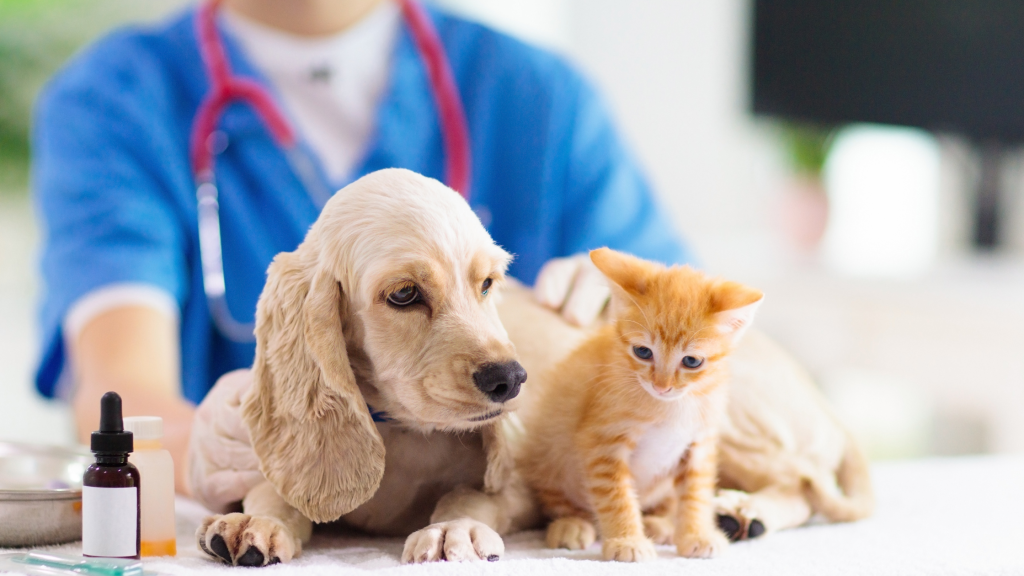
What is Pet Neutering?
Pet neutering, often a subject of hesitation for many pet owners, is an essential aspect of responsible pet care. Neutering, which includes spaying in females and castration in males, not only contributes to your pet’s health but also plays a significant role in controlling the pet population. Let’s explore this topic, understanding its nuances and how it intertwines with pet insurance.
Understanding Pet Neutering
Neutering or spaying involves the removal of certain reproductive organs in pets. For male cats and dogs, it’s the testes, and for females, it’s the ovaries and usually the uterus. Vets typically recommend neutering pets at around six months, but this can vary.
Pros of Neutering for Cats and Dogs
- Health Benefits: Neutering offers substantial health benefits. In females, it nearly eliminates the risk of uterine infections and significantly reduces the risk of breast cancer, which is fatal in about 50% of dogs and 90% of cats, according to the Humane Society of the United States. Neutered males are free from testicular cancer risks and have a reduced chance of developing prostate disease.
- Behavioral Benefits: Neutered pets are generally better behaved. They’re less likely to spray, mark territory, or roam, which reduces their risk of injury and loss. Research shows that neutered male dogs are 62% less likely to escape from home, reducing the risk of accidents or lost pets.
- Population Control: Neutering is vital for controlling the pet population. According to the ASPCA, approximately 6.5 million companion animals enter U.S. animal shelters every year, many of which could be prevented with widespread neutering. Neutering reduces the number of animals on the streets and in shelters.
Cons of Neutering for Cats and Dogs
- Health Risks: While generally safe, neutering does carry surgical risks like any operation. Post-surgery, pets might face risks of obesity if their diet isn’t adjusted.
- Behavioral Changes: Some pets might show changes in behavior or activity levels after neutering. It’s essential to understand and adapt to these changes. These changes are generally not drastic and can be managed with proper care and attention.
Comparative Analysis
Cats and dogs respond differently to neutering. Dogs might experience more noticeable changes in behavior, while cats often show less obvious changes. Age at neutering also plays a role, with younger animals typically recovering faster. While both cats and dogs generally show reduced aggression post-neutering, cats, in particular, show a significant decrease in territorial marking, which is highly valued by indoor pet owners.
Pet Insurance and Neutering
Pet insurance is increasingly covering neutering, recognizing its long-term benefits. While policies vary, many now include neutering, acknowledging it as a preventive measure that can save costs on future health issues. A study by the American Pet Products Association found that average surgical vet visits cost several hundred dollars. Insurance can significantly reduce these expenses. The cost savings with insurance is evident when considering that the average cost of a neuter/spay surgery can range from $35 to $400 depending on the region and facility.
Case Studies and Statistics
Consider the story of Max, a Labrador, who was neutered and avoided the common issue of testicular cancer found in 27% of unneutered male dogs. Or Luna, a cat, who was spayed and avoided the high risk of mammary tumors common in unspayed females. These stories, backed by statistics, illustrate the tangible benefits of neutering. Another example is a case study from a veterinary clinic where a neutered male cat showed a remarkable decrease in aggressive behavior, making him a more amiable pet.
Post-Neutering Care Tips for Dogs and Cats
After your pet has been neutered, their immediate and ongoing care is crucial for a smooth recovery. While cats and dogs will have similar basic needs post-surgery, there are some differences in their care.
General Post-Neutering Care (Applies to Both Cats and Dogs)
- Rest and Recovery: Keep your pet in a quiet, comfortable place away from other animals to rest. They’ll need a few days of limited activity post-surgery. Monitor the pet’s body temperature and gum color for the first 24 hours to ensure there are no immediate post-surgical complications.
- Pain Management: Your vet will provide pain relief medications. It’s crucial to follow the dosage instructions carefully.
- Incision Site Care: Keep the incision clean and dry. Check it daily for signs of infection like redness, swelling, or discharge.
- E-Collar Use: To prevent your pet from licking or biting their stitches, an Elizabethan collar (e-collar) is often recommended.
- Follow-Up Check: Schedule a follow-up visit with your vet to ensure proper healing.
Specific Tips for Dogs
- Activity Levels: Dogs may be more eager to return to their regular activities. Limit their exercise for about two weeks post-surgery to prevent strain on the incision.
- Feeding: Some dogs might lose their appetite post-surgery. Offer them their usual food, but don’t be alarmed if they eat less in the first day or two.
Specific Tips for Cats
- Litter Box: For cats, it’s recommended to use shredded paper instead of litter in their box for a few days post-surgery to prevent litter from sticking to the incision.
- Hiding Spaces: Cats might seek isolation to recover. Ensure they have a safe, quiet place but keep an eye on their behavior and incision.
Additional Considerations
- Behavioral Changes: Monitor your pet’s behavior. Some lethargy is normal, but if you notice excessive sleepiness, loss of appetite, or signs of pain, contact your vet.
- Diet Adjustments: Post-neutering, pets might gain weight more easily. Discuss with your vet about adjusting their diet to manage their weight effectively. After neutering, pets’ metabolic rate can drop by 30%. Veterinarians often recommend a 20-30% reduction in caloric intake to maintain a healthy weight.
- Hydration: Ensure they have access to fresh water at all times to stay hydrated.
Addressing Common Myths
Contrary to popular belief, neutering does not ‘lazy’ a pet; rather, it can prevent health issues that might otherwise limit their activity in the future. It’s important to debunk such misconceptions and understand that neutering is a proactive step towards a healthy and happy pet life.
Final Thoughts
Post-neutering care is as crucial as the surgery itself. By providing your pet with the care and attention they need during recovery, you’ll help ensure a quick return to their normal, happy selves. Understanding the full scope of neutering, from its health benefits to behavioral impacts and the crucial role of pet insurance, empowers pet owners to make informed decisions for the wellbeing of their furry companions.
Certainly! Here’s the new section formatted for a WordPress blog post:
Pet Insurance Options Covering Neutering Procedures
Choosing the right pet insurance that covers neutering can be a crucial decision for pet owners. Here are some options:
- Fetch: Fetch offers three preventative care plans, reimbursing up to $125 for spaying/neutering. The plans range from $11.29 to $32.14 monthly, allowing reimbursement for up to $735 annually for preventative care.
- Embrace: Embrace provides up to $650 for spaying/neutering with no waiting period for Wellness Rewards. They offer three levels of wellness coverage, with reimbursements ranging from $250 to $650 based on the plan selected.
- Lemonade: Lemonade offers a plan for $48.33 per month, reimbursing up to $120 for spaying/neutering. This plan also covers other preventative care costs, totaling up to $650 in reimbursements annually source.
- Spot: Spot’s Platinum Preventative Care plan, costing $24.95 per month, reimburses up to $150 for spaying/neutering. The plan doesn’t require a deductible for reimbursement and offers a total annual benefit of $450 source.
- ASPCA: ASPCA’s Prime Preventative Care plan, also priced at $24.95 per month, offers similar benefits to Spot’s plan, reimbursing up to $150 for spaying/neutering. The plan includes various other preventative care benefits source.
These plans not only cover neutering but also offer additional wellness benefits, making them comprehensive options for pet owners. It’s advisable to review the details of each plan to determine the best fit for your pet’s needs.
